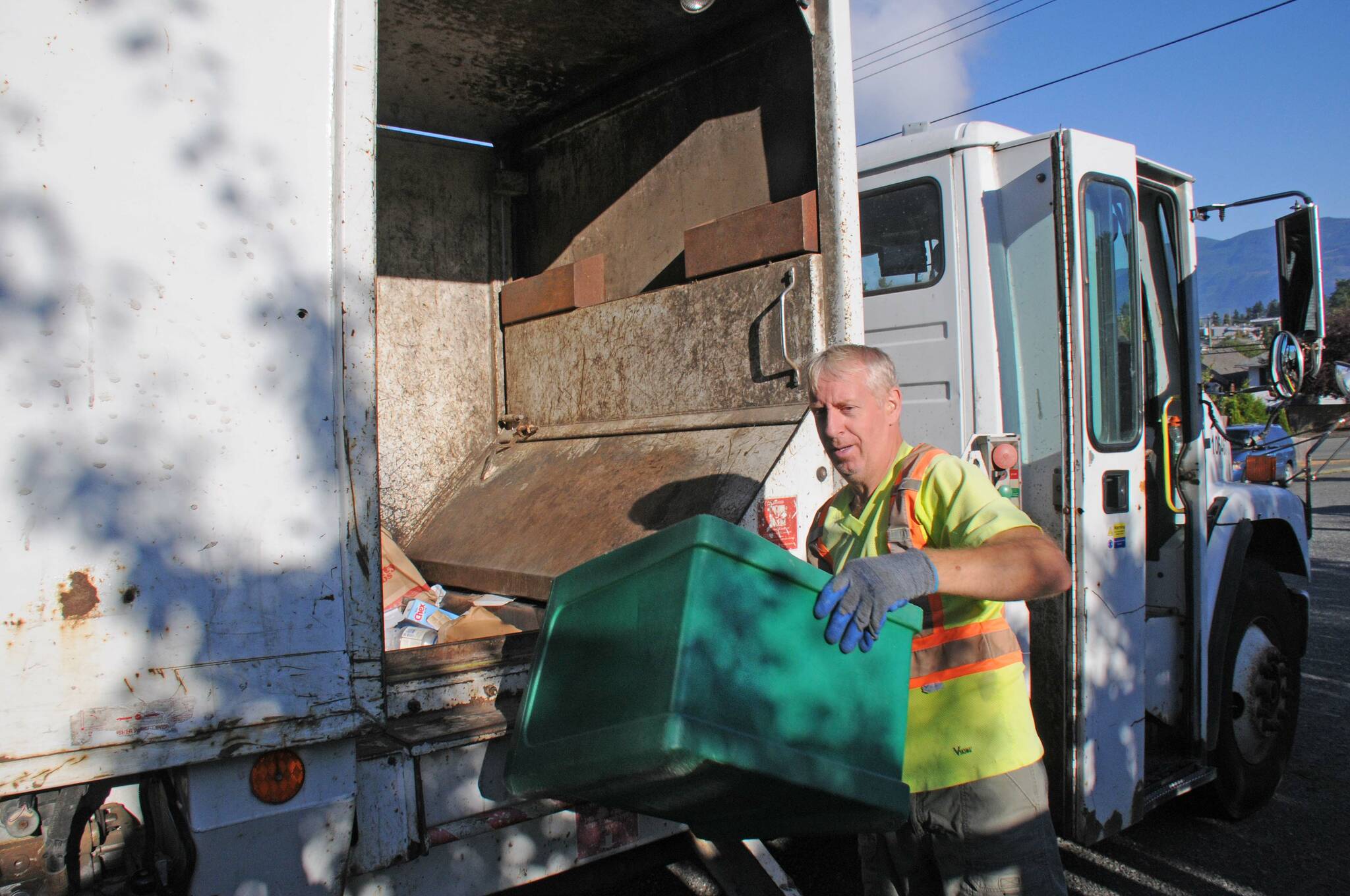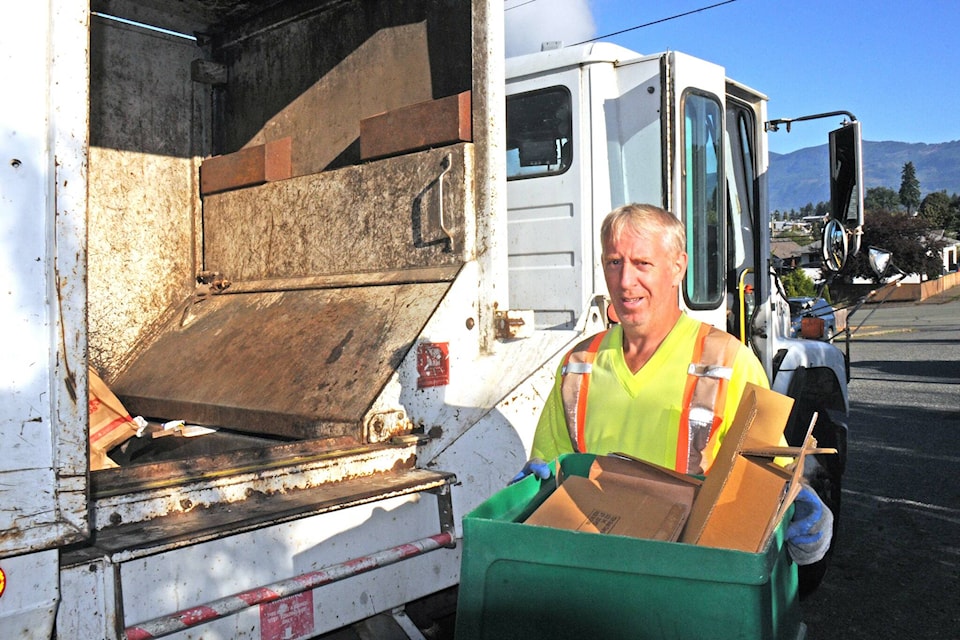By MIKE YOUDS
SPECIAL TO THE NEWS
For six years’ running, Greg Penny was the one who manually collected recyclables at curbside, stopping at every address in Port Alberni.
When glass containers, plastic bags, foam or other misdirected materials were left for blue-box pickup, Penny was the sharp-eyed gatekeeper, the one who caught them on his weekly rounds of city streets.
Other workers in other municipalities might reject the whole bin on the basis of contamination, but not Penny. He took the time to separate the unfit material and leave it behind for his “customers,” along with stickers informing them of the appropriate “end of life” for the material. In some cases, he snapped photos and sent them to Anna Lewis, ACRD waste educator. Lewis posted the information at facebook.com/ACRD.recycles, an educational site.
“We used to do What’s Wrong Wednesdays,” Lewis recalled.
“And we kept contamination rates down,” said Penny, whose job was eliminated in September when the City of Alberni switched to a three-stream system, adding automated recycling and organics collection. He works now at Third Avenue Recycling Depot.
READ MORE: Compost collection to raise garbage fees in Port Alberni
Reducing contamination in recyclable materials is essential for worker safety, efficiency and cost control, costs that are ultimately borne by taxpayers.
“It’s more or less educating people on what not to put in their recycling containers,” Penny said. “We were able to keep contamination rates down by sorting.”
The city’s automated trucks are equipped with cameras that can detect contamination, now the first line of quality control in a system that automatically issues notifications to individual households, said Jodie Frank, organics co-ordinator.
“It’s a relatively new piece of equipment,” Frank said. “Right now, they’re just getting familiar with the software.” Additional measures such as audits will be put in place to control contamination, she added.
There are multiple benefits to the switch, she noted. For a start, the strain of repetitive motion on a worker having to lift 800 totes a day is eliminated. As well, the new carts keep materials dry in rainy weather. Saturated materials cannot be recycled.
People must still sort their recyclables and drop materials such as glass, foam and plastic bags at the Third Avenue Depot. They can also consult the Sort’n Go app if they are unsure, Lewis said. The app sends timely reminders of collection dates and corresponding materials to leave at curbside. Just a few weeks in, more than 3,000 households among a total of 6,500 have already downloaded the app.
“That’s pretty good,” Lewis said. “It is helpful.”
While the new recycling program cost him his old job, Penny holds no grudge.
“I’ve bought into it,” he said. “I’ve filled the compost bin twice in a row so far. I think most people are going to adapt really well. I think most people have bought into it.
“I just wanted to say goodbye to all my customers, all those people who waved from the window,” he added.
Not that Penny won’t see the same people from time to time at the depot. A farewell gesture merely extends the same personal touch he brought to curbsides, controlling contamination at every turn.
“I do know that Greg was a pretty special person for a lot of people in the community,” Lewis said. “He took the time to explain why something was rejected. He’d wave to kids in the window and help people with their boxes. In my opinion, he went above and beyond in his job, ensuring that recycling contamination remained low.”
Benefits from landfill diversion are huge, she added.
The city is well along in pursuit of four primary goals, including increased landfill diversion, up 20 percent, and reduced waste volume to 400 from 589 kg per annually. That is still higher than the B.C. average of 350 kg per person. With continued progress on those goals, the plan is to extend landfill life by 65 years.
“And then there’s the bigger question of climate change,” Lewis said.
Methane, a byproduct of landfills, is roughly 80 times more effective as an atmospheric heat trap than carbon dioxide. Separating compostables significantly reduces methane production.
Frank said 90 tonnes have already been diverted in the first two weeks.
Despite some resistance, a majority has, like Greg Penny, readily adopted the new system.
“We’re losing a huge asset to the program,” Frank said, referring to Penny. At the same time there are greater efficiencies for the city in terms of reduced contamination of recyclables and greater landfill diversion.
“It’s very astonishing how many people have been supportive of the program and that are on board,” Frank said.

